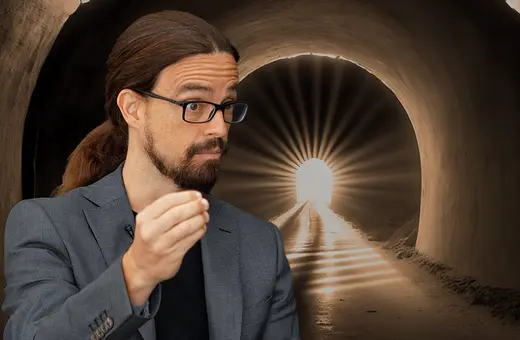Morality has become dominated by talk of ‘concepts’, principles, well-being and virtue. But these notions leave out key detail. If we are to have any deep understanding of morality, we must re-centre our focus on ‘attention’. By looking back to the works of William James, Simone Weil and Iris Murdoch, argues Elisa Magrì, we can chart an ethical framework that reshapes our mental landscape and provides us with meaning.
In Principles of Psychology (1890), William James, one of the most influential philosophers and pragmatists of the 19th century, wrote that “an education which should improve this faculty [of attention] would be the education par excellence.”
Working in the aftermath of Wilhelm Wundt, a father of modern psychology, and his studies on attention, James explored the different ways that we deploy attention to direct our will to objects and actions. To this end, James distinguished between sensorial and intellectual attention. The former refers to how we attend to our sense-impressions (for example, how intense or strong our sensations of heat or cold are), whereas the latter is the effort we put into thinking (for example, when we solve a problem, or make a choice).
[relatedVideo =1620]
Crucially, both sensorial and intellectual attention can occur either involuntarily or voluntarily. Paying attention to a sudden pain in the leg, for instance, occurs without our conscious control. Sometimes, however, we use attention to focus on specific sensory impressions (as in taking one’s pulse) as well as thought-processes.
As I write this article, I pay attention to the thoughts I want to express, and to the connections I want to make between philosophical arguments and their implications. There are also cases when the mind wanders in the reenactment of past events provoked by associations between current and former experiences, as happens when I listen to a song that takes me back to the first time that I heard it. From this point of view, attention is intertwined with both our sensory and intellectual abilities, including memory and imagination.
___
The practice of attention is a discipline of the mind that is infused with desire.
___
There was, however, a deficiency in this account. There are uses of attention that escape the voluntary/involuntary binary view advanced by James. To illustrate this, consider the short story Mrs. Sen from Interpreter of Maladies (1999) by Jumpa Lahiri.
The story centers on the daily interactions between a young American boy, Eliot, and his babysitter, an Indian lady Mrs Sen, who happens to be a professor’s wife. Through Eliot’s eyes, Lahiri carefully brings into light the contrast between Eliot’s mother, a distracted and workaholic woman, who is slightly wary of Mrs. Sen’s Indian heritage and customs, and Eliot’s way of understanding Mrs. Sen’s character and domestic habits. While, for Eliot’s mother, Mrs. Sen is just an Indian wife who is still learning how to drive at age 30; Eliot is sensitive to the nuances of Mrs. Sen’s habits, emotions, and moods.
Eliot’s attention grasps the meticulous but careful way Mrs. Sen cuts vegetables and fish for dinner, as well as her tense self-awareness in driving. By attending to Mrs. Sen’s moods, gestures, and rituals, Eliot develops a close understanding of her individuality to the point that he does not need to know that Mrs. Sen’s grandfather has died to realize that Mrs. Sen is suddenly distressed and sad.





















Join the conversation